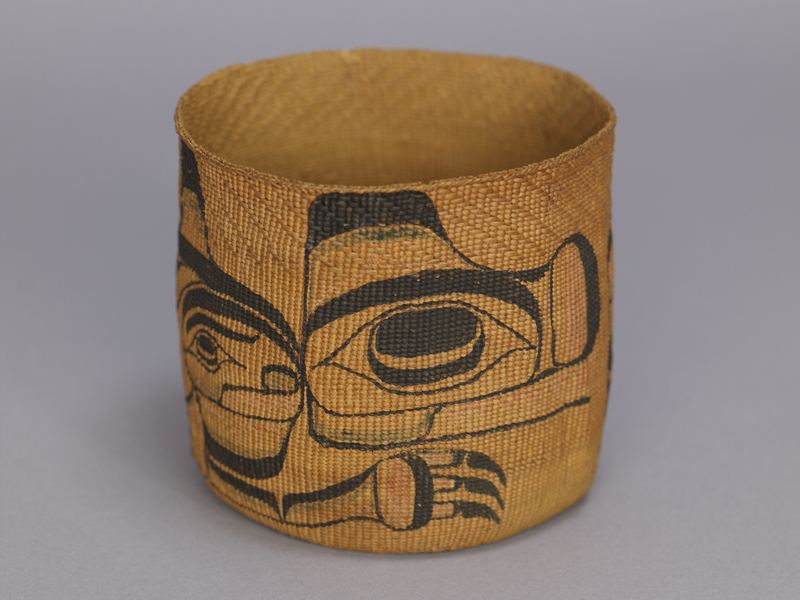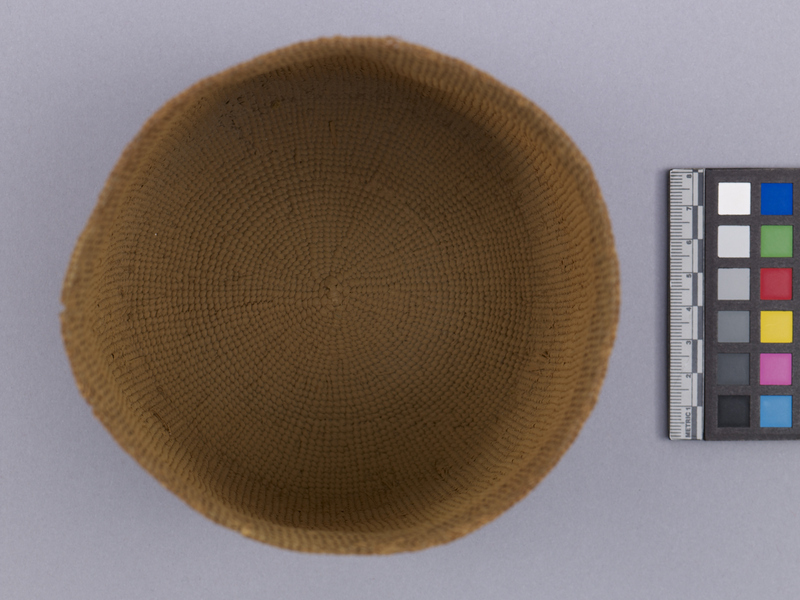Basket Item Number: 3260/55 from the MOA: University of British Columbia



Description
Cylindrical basket with painted Wasgo (sea wolf) imagery around the side in black with faded white, red and blue details. The upper border is elaborated with geometric designs created through a raised pattern of skip-stitch twining.
History Of Use
Made in a range of sizes, the cylindrical baskets woven by 19th-century Haida women for berry picking and other uses were often tightly twined of carefully prepared lengths of spruce-root, with alternating bands of dyed and undyed spruce-root wefts creating the striped pattern. The upper border of cylindrical baskets are elaborated with geometric designs created through a raised pattern of skip-stitch twining.
Historically, the presence of Haida baskets among the Tlingit, Tsimshian, and Kwakwaka’wakw, and the exchange of weaving techniques and styles through travel and intermarriage, expanded as the market for basketry began to encompass tourists and collectors. By the 1880s Haida weavers were increasingly creating articles for sale to non-Indigenous buyers. The widespread availability of manufactured household goods meant that fewer baskets were required for traditional purposes. Weaving became a way for women to contribute to the family income, often in addition to holding seasonal jobs in fish canneries and salteries. Even though the names of those who wove such baskets were rarely recorded, their anonymity is increasingly being countered as contemporary weavers and other researchers study the historical pieces and bring attention to the personal styles and creativity of individual makers.
Narrative
Basket maker is unknown; painted design attributed to John Cross.
Item History
- Made by John Cross (Maker) and Unknown (Maker) in Skidegate, British Columbia, Canada between 1890 and 1920
- Owned by Elspeth McConnell before August 12, 2017
- Received from Elspeth McConnell (Donor) on August 12, 2017
What
- Name
- Basket
- Identification Number
- 3260/55
- Type of Item
- basket
- Material
- spruce root and paint
- Overall
- height 12.0 cm, diameter 13.0 cm
Who
- Culture
- Haida
- Creator
- John Cross (Maker) and Unknown (Maker)
- Previous Owner
- Elspeth McConnell
- Received from
- Elspeth McConnell (Donor)
Where
- Holding Institution
- MOA: University of British Columbia
- Made in
- Skidegate, British Columbia, Canada
When
- Creation Date
- between 1890 and 1920
- Ownership Date
- before August 12, 2017
- Acquisition Date
- on August 12, 2017
Other
- Item Classes
- basketry
- Condition
- good
- Accession Number
- 3260/0055